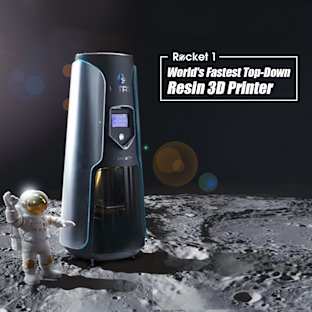![]()
Oliver's Story
Here is the background on Oliver's heart condition, as told by his mom, Chrissy.
"On May 7th, we welcomed Oliver to our family. He was a beautiful 8lb 12oz baby and we had no idea that anything was wrong. One of the wonderful nurses discovered a heart murmur that changed our lives. He was so healthy and strong that we all thought his murmur was not serious but they called a cardiologist to come in to be sure. He discovered Oliver had a serious congenital heart defect and we had to move over to Egleston immediately.
Oliver had several issues with his heart but the main diagnosis was an IAA (interrupted aortic arch). The aorta, which carries oxygenated blood from the heart to the body, was not fully formed. This normally prevents any blood flow from circulating to the body and lower extremities but Oliver had two other defects that kept his blood flowing and masked that he was even having any trouble. He also had a PDA (patent ductus arteriosus). This is a connection between the pulmonary artery (the vessel that brings deoxygenated blood from the heart to the lungs) and the aorta which allows blood flow to bipass the lungs during fetal circulation. Usually, this closes very quickly after birth but with Oliver, it stayed open. This connection allowed some of the blood to flow from the pulmonary artery to the lower part of the aortic arch, bringing blood to the body. The third defect is a VSD (ventricular septal defect) which is a hole between the ventricles. This defect allowed the oxygenated and deoxygenated blood to mix in the heart. Instead of deoxygenated blood being carried through the pulmonary artery, mixed blood flowed through and brought oxygen to his body. Although he was stable before his surgery, his condition would have changed very quickly if the PDA closed. We are so thankful that it was discovered early.
Oliver was given a medication to keep his PDA open and that bought us time at Egleston to plan Oliver's surgery. After many tests, the surgical team decided they would have to do a stepped approach to Oliver's repair rather than one surgery to fix his heart. Due to the changes in his blood flow, parts of his heart and vessels did not develop as large as they normally would and he would need multiple surgeries and time to grow in between.
At one week old, Oliver had his first open heart surgery. Dr. Kanter went in to repair the arch and preformed a procedure called the Norwood. This is usually done on babies with only one ventricle which allows mixed blood (oxygenated and deoxygenated) to flow throughout the body. They left the VSD allowing his blood to mix and used his PDA to aid in rebuilding the arch as well his pulmonary artery. Finally, they placed a shunt (artificial vessel) to act as the pulmonary artery and take blood to the lungs. This temporary repair allowed Oliver to grow but the shunt was small and would need replacing in 6-9 months. The surgery was very complex and took almost 12 hours to complete but Dr. Kanter made sure the repair was perfect.
We were able to see Oliver after surgery and at that time it well past midnight. His chest was open due to swelling and he had many chest tubes and lines coming out of him. I couldn't even recognize him laying there. It was such a horrible sight. He was still on the breathing tube and sedated so we went home to rest after our long day.
The next morning I arrived early and was there until mid afternoon. I hadn't really slept and the nurse urged me to go home and get some sleep. Oliver was doing well and the critical 12 hour period after surgery had passed. I finally gave in, feeling exhausted. Shortly after I left his heart stopped. I had barely been home when we got the call. They were not able to get his heart functioning but they were able to put him on ECMO (extracorporeal membrane oxygenation) which is a heart lung bypass machine. This machine does the work of Oliver's lungs and heart while allowing his heart time to recover. I am so thankful that ECMO exisits but it is not something you ever want to need. When we arrived back at Egleston, there were more connections coming out of his chest, carrying the blood out of his body to ECMO and back in again. Five days passed and the doctors felt they could try to take him off. We were warned before that if it was not successful now, he would not likely survive but he was strong and regained function of his heart.
After a couple days and a chest closure later, it was time to try to get him off his vent and get him breathing on his own. Each time we extubated him from the vent he had respiratory distress and collapse of his left lung. After several days of trying different things, the doctors discovered his left diaphragm was moving in the opposite direction than it should. Instead moving down and helping the lung open when Oliver took a breath, it pushed up and, along with some fluid in the lung, caused it to keep collapsing.
The solution to this was to have another surgery. They did what was called a diaphragm plication. This is where they go in through the ribs and tie the diaphragm down in the open position preventing it from pushing against the lung. He did well with this surgery and we were finally able to get him off the breathing tube.
The next hurdle to get over was feeding. We started feeding Oliver tiny amounts through a feeding tube that ran through his nose. He was not able to tolerate even the smallest amounts of food and we discovered he had severe acid reflux. Now we were facing yet another surgery. This time, Oliver had a fundoplication and a g-tube placed. A fundoplication is where the surgeon wraps part of the stomach around the base of the esophagus and the upper part of the stomach allowing food to go in but preventing anything from coming out. This kept the reflux from traveling up his esophagus and causing him to throw up. The g-tube is a tube placed into the stomach through the wall of the abdomen. This is where his feeding primarily took place but with the help of time and feeding therapy, the doctors were confident that he would be able to have the g-tube removed.
We were finally able to feed him with the help of the tube and we were increasing feedings gradually to his reach his goal. Again, he was breathing on his own after being on the vent again for the third surgery. We were hoping to get him out of the ICU when he developed an arrythmia that could be life threatening. He still had an external pacemaker thankfully and they were able to control it while they tested different antiarrythmia medications to treat it. Many of these drugs could cause harmful side effects so finding a balance was a delicate and time consuming project.
After some time, arrythmia controlled, we were transferred to the cardiac step-down unit where we learned more about how to care for Oliver at home. He had a dizzying 13 medications to be administered throughout the day and he was getting his feedings through a pump into his tube. There was a lot to learn in just a couple short days. It was seven weeks to the day and we were finally discharged home.
Almost two months late, we brought our baby home from the hospital. After an adjustment period, we developed a routine. We juggled many appointments with the cardiologist, feeding therapist, physical therapist, pulmonologist, gasteroenterologist, and pediatrician. It was hard at first but we were all so relieved to be together as a family again. Even Lewis adored his baby brother dispite him getting much of the attention.
Over the last six months, Oliver has been getting bigger and stronger. He is down to just three medications and only uses his feeding tube at night. He nurses during the day and even eats solids now! We had several hospitalizations over that time but they were due to a stomach virus, bad cold or the flu. Due to the delicate nature of the first repair, the doctors are cautious with him and we were admitted to Egleston more frequently than we would have liked."
Latest update after 2nd surgery:
"Oliver is in stable condition and the doctors are pleased. He's not totally out of the woods but since he did so great with surgery, he will likely have an uncomplicated recovery. We are hoping for a quick stay in the ICU. You will be amazed at how fast
all those tubes will come out, leaving him looking like Oliver again. I can't wait!!"
Jan 19th update,
We all hoped for a quick, uncomplicated recovery for Oliver. We don't always get what we hope for. I wanted to post an update that Oliver's mom, Chrissy wrote a few days ago about the experience she's been going through these past days and months.
"As you can probably imangine, the ICU is a hectic place. The cardiac ICU at Egleston is very open. You can look up and down and see other patients, families, nurses, doctors, tons of equipment. Nothing much is hidden, it's all out in the open. You can see when someone is having a good day like yesterday when a crib arrived for my neighbor. That meant they were being transferred to the step down unit. The bad days are evident too. Today was one of those days. Emergencies erupted all over the unit today. I had a difficult, tearful day but I know that others had it worse. One nurse touched my shoulder and commented that there were a lot of tears in the ICU today. It made me realize that I'm not alone. I know how fortunate I am that I will mostly likely bring my baby home with me. It may not be on my timeline but I will. Some others will not be so fortunate. I left this evening and noticed a couple in the consult room, tear soaked faces with a tiny baby not far away with doctors huddled around. Lowell and I were once that couple. I felt so terrible for them but it also made me realize how much we have overcome in this past 8 months. The ICU is a horrible and wonderful place. So much healing and heartache surrounds it. I am in awe of the doctors and nurses that can face that place each day. They are truly special people."
-Christine Thompson
For those interested, you can visit http://www.carepages.com/carepages/OliversHeart to receive daily updates on Oliver's progress.
We can't wait either. That's why we're appealing to you for help.
- Oliver will need a lot of care and attention over the next few months.
- Chrissy hasn't been able to work a full week since he was born due to the extensive care Oliver requires.
- Day to day expenses, as well as huge medical bills are adding up during this very difficult and trying time.
The Impact
Anything you can give, no matter how small, will have a huge impact on Oliver's recovery. The less time Chrissy and Lowell spend worrying about bills the more time they can spend with Oliver.






















































